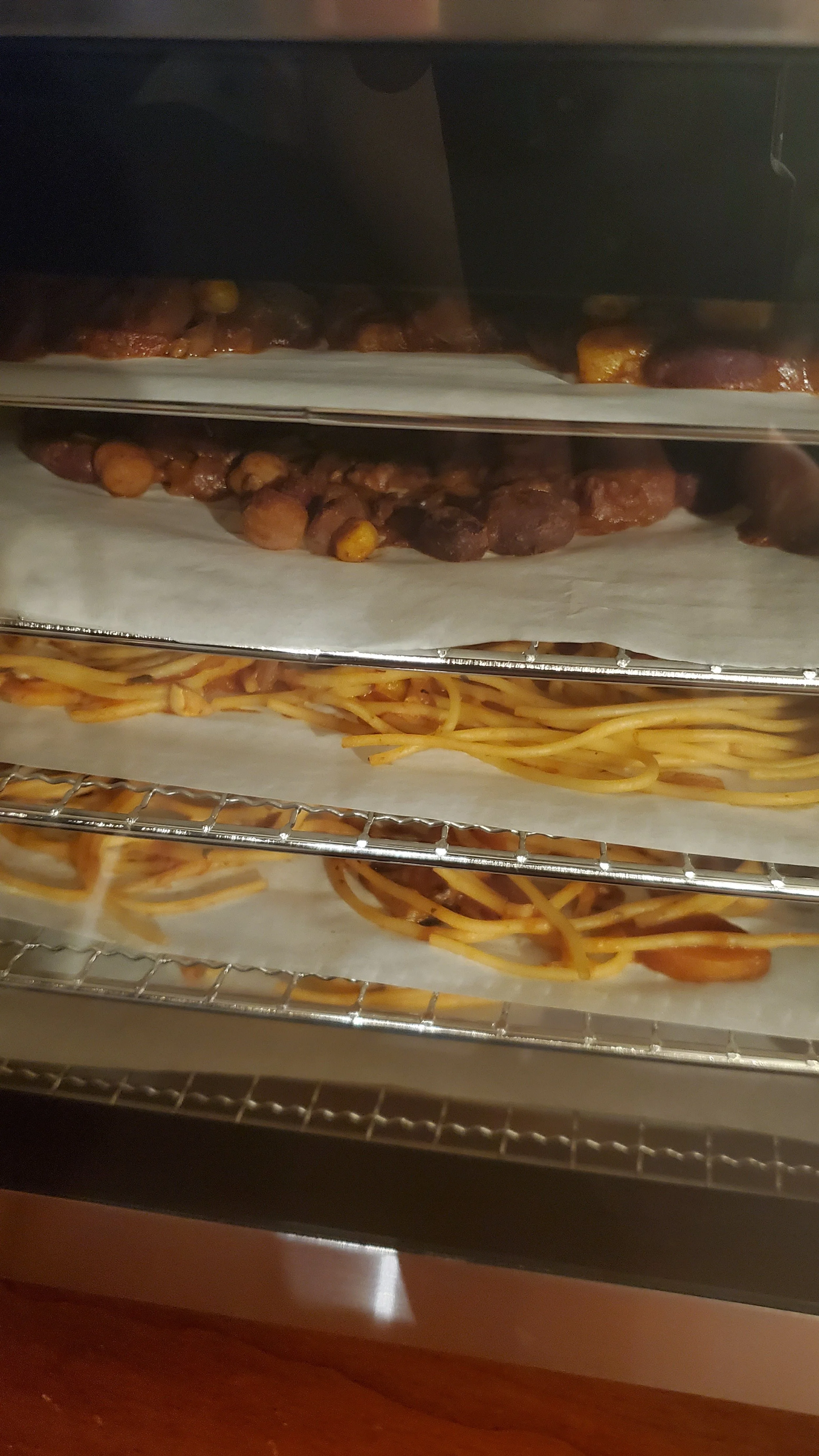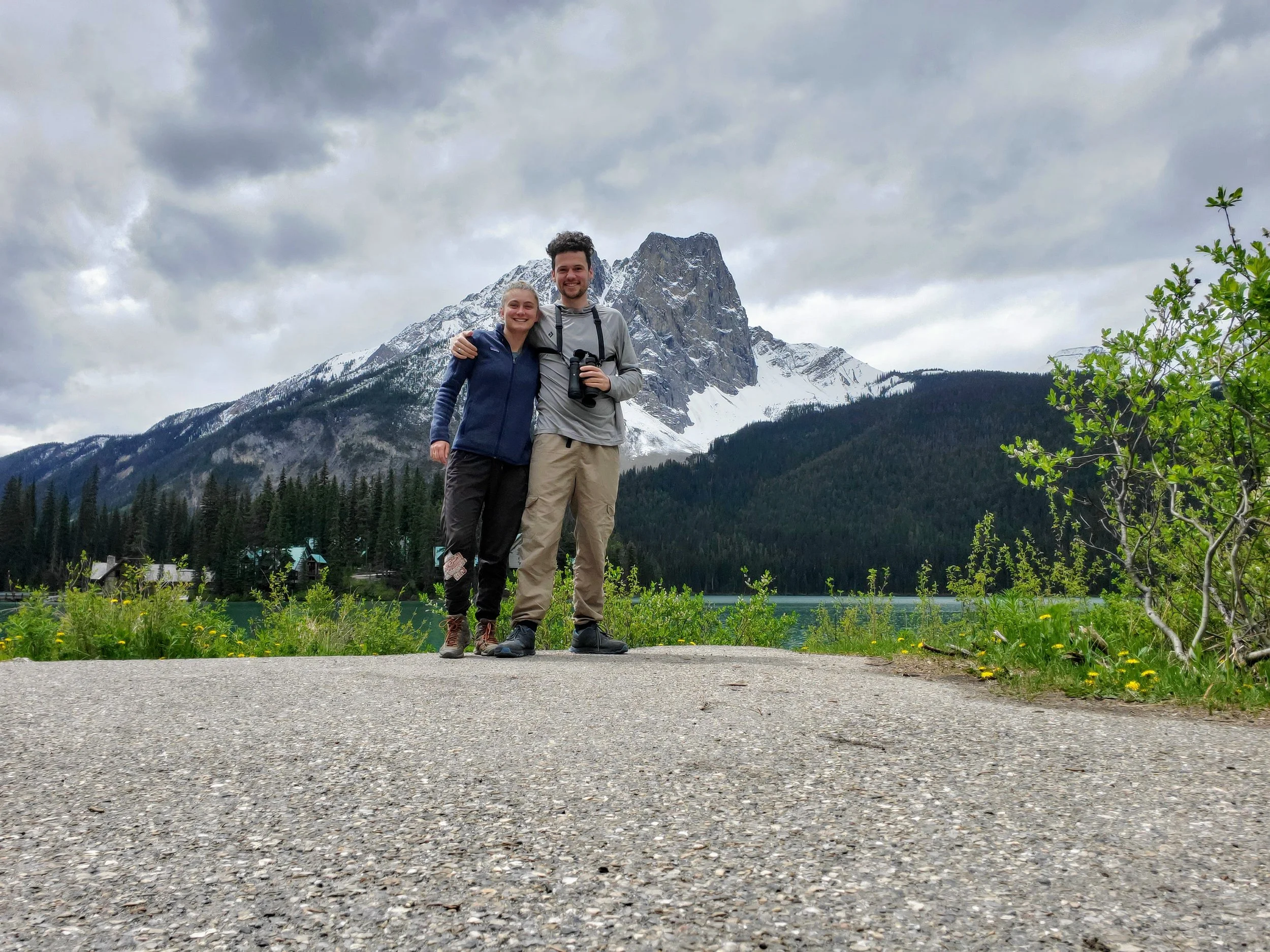“Fooooooodddd”
The mumbled sound carried across the oddly calm lake. On the other side, a hiker suffering from deep hunger.
This is our fear, to be hungry from a cause that we could’ve thoroughly prevented.
Good Food > Bad Food
If you’ve never had the privilege to enjoy a sit-down meal with Solange and me, you wouldn’t guess that we consume a lot of food. A lot. So much so, that much of our planning in life, and for the GDT, orbits the concept and materialization of food. Going out to a restaurant is usually displeasing when you receive the bill and think to yourself “I can definitely make that better…”
Whats’ worse?
When I can make it better, I’m still hungry, and I am staggered that half a week’s money worth of groceries is gone.
So, in our preparation for our 54-night outing, we are going the extra mile to ensure that not only our nutritional values are met, but that our palettes are delighted at the sensory exposure of finely prepared meals whilst in the wilderness.
From a financial perspective, consuming freeze-dried meals, such as Mountain House or Backpacker’s Pantry, doesn’t provide the value we need. At a very conservative $12 per meal that would cost the 2 of us…well, let’s see ($12/meal * 2 people * 54 nights = $1,296) and that’s just for dinner! Yikes!
Our approach to fine dining in the backcountry embodies the belief “if you want it done right, do it yourself.” So, that is exactly what we are doing! In order to save money, we had to spend some money to buy our own food dehydrator. Making our own meals will not only allow us to fine-tune the flavor, quantity, and nutrients, it also allows us to add variety and take creative control of our diet. Fresh veggies and even veggies in freeze-dried meals are not abundant, so we will be adding more veggies to our diet for a boost of fiber and nutrients.
Solange skims the directions before the christening of the dehydrator.
The cost of our meals at home are right around $3.25/meal, or less than $20 per day for two people. Compared with two freeze-dried dinners for $24, we clearly have the monetary upper hand. Now, when we are making meals specifically for the GDT, we will increase our carbohydrate component of each meal, to provide the appropriate volume of food and “energy”. With that said, I believe our backpacking meals will come out to less than $3.25 per meal.
Let’s see how much we will save…
(($3.25/meal * 2 people * 54 nights) + $200) = $551
1,296 - 551 = $745
The dehydrator investment was well worth it. We reduced our dinner cost by 57%!
“Shout and Holler; For we saved a couple dollars!”
Dinner is the focus of our meal creation. Our thought behind it is that after a shitty, long, hard, wet, cold day (It’s bound to happen) we can at least have our creature comforts of a tasty warm meal while shivering in our sleeping bags under the protection of our trusty tent.
Chili on top, Spaghetti on the bottom. The first attempt at dehydrating our meals.
Ahhh, why yes, the other two meals, breakfast and lunch. Our thoughts on these two meals are that we will be on the move so something quick, portable, and nutrient-dense will do us best, especially for breakfast.
Breakfast. As much as I would like to boil some water, sip warm coffee and stir together a batch of creamy oatmeal, I don’t think it’s realistic to perform that ritual every morning. Hearing from others that they shared similar aspirations for a nice breakfast, only to find themselves a few days later ditching the sit-down meal for a granola bar and a stroll. “It just adds more steps to the morning breakdown routine” is a commonly cited reason for abandoning the sit-down meal.
Lunch. Now, this is a good time to take a little break, sit down and mix up some water with a creation dried several months earlier while snow still covered the ground. Dehydrated hummus. Boy, does that ever sound good?! Perched on a ridge somewhere in the Rockies enjoying hummus, crackers, cheese, and cured meat. That won’t be every day, but it will provide a substantial portion of our lunchtime meals.
A total cost breakdown of our meals at this point would be anything but exact, a well pointed-assumption is perhaps a better term. If we assume that dinner will be our most expensive meal of the day, to provide an upper limit value, we can assume that all three meals will cost $10/day/person. So….($10 * 2 * 54 = $1080) $1080?! That sounds a bit low, but maybe it isn’t? I would expect that all said and done, we will have budgeted for $1500 of food for the entire trip.
$1500 / 2 people / 54 night = $13.88/person/day
$13.88 if you recall, is roughly the same price as a single mountain house.
Solange showing off our first dehydrated meals! 250g each of dehydrated chili and Spaghetti.





